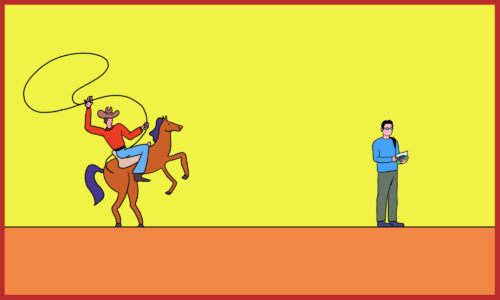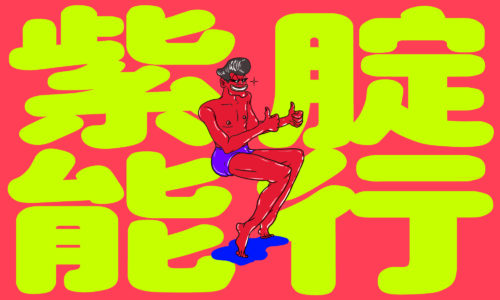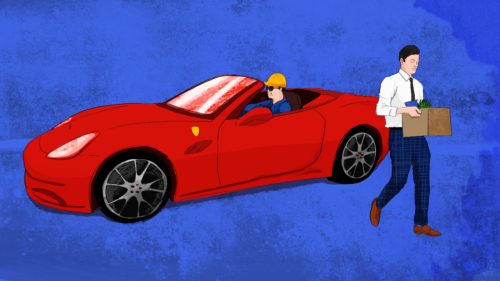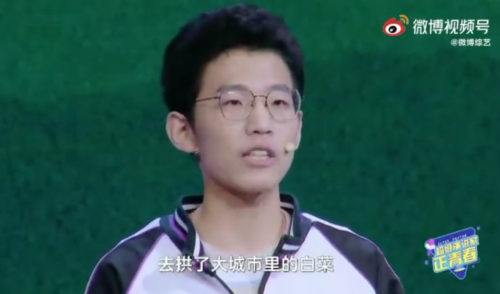From propaganda to pollution to smartphones: A history of gaokao essay questions
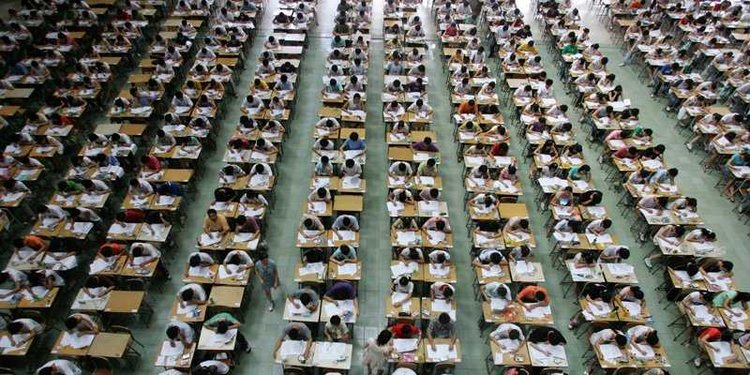
No other assessment test has been taken by more people than the gaokao, China’s national college entrance examination. Almost every Chinese college graduate you’ve met has at least taken it once, twice, or maybe three times (as was the case with Jack Ma, founder of tech giant Alibaba). What that means is, hundreds of millions of Chinese have gone through the experience of cramming for the test, memorizing materials (up to 60 pieces of ancient Chinese texts), and stressing about whether Lu Xun really meant what he wrote.
It’s no wonder, then, that each year’s gaokao essay questions — which are subjective and often open to interpretation, if not outright confusing — become topics of public scrutiny and debate: because everyone has experienced, to a certain extent, the bewilderment of seeing a question such as, “Write a poem about ‘circle.’”
Several essay questions from this year’s three-day gaokao — which began today — have been published by testing authorities. One essay prompt asked students to write an article given the headline, “I Have a Date with 2035” (我和2035有个约 wǒ hé 2035 yǒu gè yuē), the name of a song by popular Chinese boy band TFBoys. The prompt suggests that by 2035, China will reach Xi Jinping’s goal of “basically realizing socialist modernization.” In a provincial test, students were provided with the title “New Era, New Youths — Growing Up with China’s Development” (新时代新青年 — 谈在祖国发展中成长 xīn shídài xīn qīngnián — tán zài zǔguó fāzhǎn zhōng chéngzhǎng), which gas a similar nationalistic theme as last year’s prompt, “The People’s Republic, Let Me Take a Photo of You” (共和国,我为你拍照 gònghéguó, wǒ wèi nǐ pāizhào).
As essay prompts often reflect the Chinese government’s attitudes, it would not be a stretch to say that there’s a parallel between the evolution of gaokao essay questions and how the country itself has changed over the past 40 years.
The first few gaokao exams in the late ’70s centered on issues with strong political undertones. The Beijing test of 1977 featured the topic, “My Fight in the Past Year” (我在这战斗的一年里). Many test-takers that year were already adults — some in their 30s — who left their jobs to pursue their dreams of receiving a higher education. Beijing Daily published a response from Yan Yangsheng 阎阳生, a sanitary worker who wrote about deciding to return to school after the birth of his daughter.
In 1978, candidates were asked to abridge a People’s Daily editorial, “The Problem of Speed is a Political Issue” (速度问题是政治问题 sùdù wèntí shì zhèngzhì wèntí), into 500 to 600 characters. The original editorial pointed out that it was pivotal for China to rapidly boost its economy.
As China initiated economic liberalization, urbanization necessitated environmental protection. In 1979, the Chinese government set May 12 as “Arbor Day,” which has been observed ever since. In 1981, gaokao test-takers were asked to write a review of an article titled, “It is Easier to Destroy Than to Plant a Tree” (种树容易毁树难 zhǒng shù róngyì huǐ shù nán). The gaokao of 1983 introduced a new form of essay prompt, featuring a cartoon captioned, “There is No Water Down Here; Try Somewhere Else” (这下面没有水,再换个地方挖 zhè xiàmiàn méiyǒu shuǐ, zài huàngè dìfāng wā). The question expected candidates to address the issue of water overuse.

In the 1985 gaokao, students were asked to write a letter to the editor of the party-owned publication Guang Ming Daily 光明日报, soliciting media coverage of a local pollution issue. In the year after, the topic was “Tree, Forest, Climate” (树木 森林 气候 shùmù sēnlín qìhòu), on which the question elaborated: “A single tree cannot change the climate, only forests can,” prompting candidates to draw a parallel between the natural environment and human social behavior.
In the 1990s, testing authorities began to encourage students to reflect on morality and philosophy based on real-life circumstances. In 1990, test-takers were asked to analyze an incident in which a student helped another student with schoolwork, resulting in the family of the latter to offer 200 yuan as gratitude. (Soft corruption? Hmm.) In 1997, students were given a news excerpt from the story of a student who carried a paralyzed friend to school every day for six years.
Since the turn of the millenium, some provinces have begun to design their own tests instead of using the national test. Essay topics began to involve more current events and social issues. In the 2008 national test, test takers were asked to write about the earthquake in Sichuan, in which more than 60,000 people perished. The 2009 Beijing essay topic was “Invisible Wings” (隐形的翅膀 yǐnxíng de chìbǎng), the name of a viral song by Taiwanese singer Angela Chang 张韶涵. After China’s victory in the 2011 World Table Tennis Championship, the Beijing test of that year asked for an opinion piece on whether the Chinese team should show more mercy and give opportunities for other countries to win. Among many satirical responses online, one netizen wrote: “While I think China should give away a few of its medals, that would be against the Olympic spirit. Just as a fu’erdai (second-generation nouveau riche), I’d love to give some of my villas and sports cars to you, but that would not accord with the mechanism of a socialist market economy.”
China restored the gaokao in 1976, at the end of the Cultural Revolution, in an attempt to enable sent-down youths to return to universities. Celebrating the 40th anniversary of its restoration, the 2016 national test went a bit meta, asking for an essay regarding the exam itself: “My Views on Gaokao” (我看高考 wǒ kàn gāokǎo). The Beijing test of 2013 focused on the digital age, asking candidates to imagine what Thomas Edison would think about smartphones. After a series of cases in which chengguan — China’s law enforcement agents — used violence to abuse street vendors in 2013, one satirical response went: “Edison envisioned a strong potential for smartphones in the Chinese market. With location-based service on their phones, street vendors can detect bad-tempered chengguan to avoid being harmed.”
In 2014, the question asked students to think about what they would do if a family member kept calling while one was driving, making one feel unsafe. The 2015 gaokao essay prompt invited students to imagine a scene in which a college student reports her father’s illegal behavior to the police via Weibo to ensure his safety. Given a couple of keywords — including OBOR, high-speed rails, and mobile payment — gaokao test-takers in 2016 were asked to introduce China to foreigners.
Want to give it a try? Here, once again, was the Beijing regional test question from last year. Good luck!
The People’s Republic, Let Me Take a Photo of You (共和国,我为你拍照)
Imagine China in its 100th anniversary in 2049:
X ________________________________________

